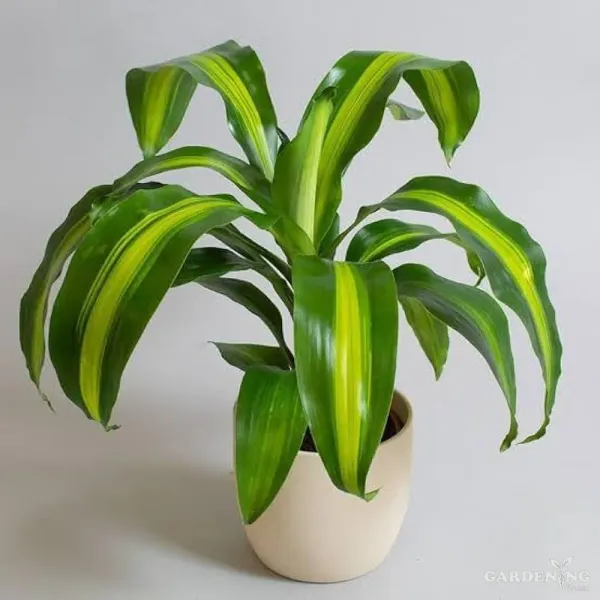Dracaena fragrans
By HomelyplantsN/A
Save 320 Rupees
₹ 479
₹ 799.00 40% offThis item is not active. Get notified when it comes active
Product Description
Dracaena fragrans, also known as the Corn Plant or Massangeana, is an exquisite houseplant renowned for its lush foliage and air-purifying qualities, making it a fantastic addition to any indoor space
Transform your living or working environment into a serene oasis with the captivating Dracaena Fragrans, also affectionately known as the Corn Plant. This stunning houseplant is renowned for its graceful, arching leaves that elegantly cascade downwards, adding a touch of tropical splendor to any room.
Additional Details
| Soil | Use a well-draining, peat-based potting mix. Avoid heavy soils that retain too much water, as this can lead to root rot. |
| Watering | Allow the top inch or so of soil to dry out before watering. Water thoroughly, ensuring excess water drains from the pot. Avoid overwatering, as this can cause root rot. |
| Temperature | This plant prefers temperatures between 65-80°F (18-27°C). It can tolerate slightly cooler temperatures but is sensitive to drafts and cold air. |
| Fertilizing | Feed your Dracaena fragrans during the growing season (spring and summer) with a balanced liquid fertilizer diluted to half strength every 2-4 weeks. Reduce feeding in fall and winter. |
| Pests and Diseases | : Common pests include spider mites, mealybugs, and scale insects. Keep an eye out for signs of infestation such as webbing, sticky residue, or tiny insects on the plant. Treat infestations promptly with insecticidal soap or neem oil. Dracaenas are also susceptible to root rot if overwatered. |
| light | Dracaena fragrans prefers bright, indirect light but can tolerate lower light conditions. Avoid direct sunlight, as this can scorch the leaves. |
| container type | Use a container with drainage holes to prevent waterlogging. The size of the pot should be slightly larger than the plant's root ball, allowing room for growth. |
| leaf quantity | Dracaena fragrans typically has multiple leaves forming a rosette-like shape at the top of the stem. The number of leaves can vary depending on the age and size of the plant. |
| pruning | Trim off any yellowing or dead leaves as needed to maintain the plant's appearance. You can also prune back leggy stems to encourage bushier growth. |
| Seller Name | Homelyplants |
Questions
Have doubts regarding this product?
Similar Products

